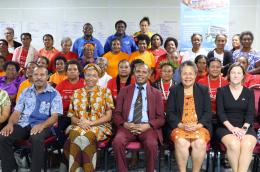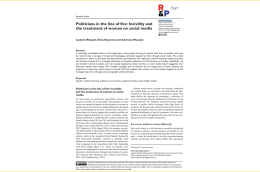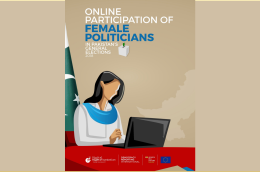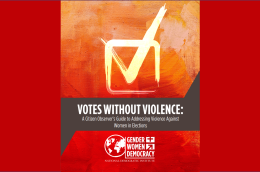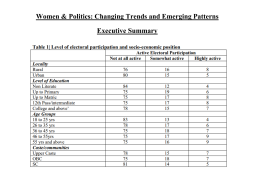Women's Leadership
Main navigation
As global instability mounts, the stakes are high for the 79th United Nations General Assembly high-level debate, which begins Tuesday in New York City.
While tensions in Europe and the Middle East continue to dominate the diplomatic agenda and shake up the global order, all eyes will be on the Big Apple for leaders to set the diplomatic agenda for the coming year. This year, once again, the U.N. General Assembly high-level debate will be dominated by men speaking at the rostrum.
A provisional list of speakers published earlier in September - which is likely to change until the very last moment - revealed that less than 10 of the leaders set to speak at the high-level week are women, showing the hill remains steep for women in politics, especially in the top job. There were only 27 countries where 28 women served as Heads of State and/or Government globally as of June, and gender equality in the highest positions of power will not be reached for another 130 years, according to UN Women.
While, so far, only around ten women prime ministers or presidents are set to travel to New York for the event, there is a bright side: the first woman to speak comes earlier than usual.
Read here the full article published by Forbes on 23 September 2024.
Image credits: Forbes
Foreign Affairs Minister Mélanie Joly says it's time for a woman to lead the United Nations, a call echoed by 14 other female foreign ministers Friday.
"Within the UN system, it is time for the next secretary-general to be a woman," she told reporters in Toronto.
"The UN has been existing for more than 75 years, so it is more than time."
States will nominate the UN's tenth secretary-general for a term starting in 2027. Women have only served in the role of deputy secretary-general, including Canadian diplomat Louise Fréchette.
The ministers also say there should be gender parity in the role of the president of the UN General Assembly — out of 72 terms only four women have held the position.
Joly co-hosted women foreign ministers in Toronto alongside her Jamaican counterpart Kamina Johnson Smith, following a similar gathering in 2018. The two-day meeting included ministers from Ghana, Indonesia, Nepal and Romania. It came ahead of high-level visits at the UN General Assembly next week in New York City.
Read here the full article published by CTV News on 20 September 2024.
Image credits: CTV News
What you need to know:
-
Women politicians face steep costs, both financial and personal, as they navigate a landscape fraught with cultural barriers, discrimination, and systemic challenges.
-
Despite progress made since the 2010 Constitution, women's representation in Kenyan politics remains low.
-
Resilient leaders like Eddah Njeri, Naisula Lesuuda, and Myllene Bosibori encountered multifaceted obstacles, from exorbitant campaign expenses to sexual harassment and societal prejudices.
-
While initiatives to support them show promise, the road to equal representation remains long, calling for comprehensive reforms and a shift in cultural attitudes.
The sun had barely risen over Embu town when Eddah Njeri unlocked the door to one of her M-Pesa shops. As she arranged the day's float, her mind wasn't on mobile money transactions. Instead, it raced with campaign strategies, voter outreach plans, and the daunting financial hurdles that lay ahead. The successful businesswoman, had recently made the bold decision to run for the Kirimiri Ward seat in Manyatta Constituency.
Being a greenhorn in politics, she says, nothing had prepared her for the challenges to expect on the campaign trail and how she would overcome them.
As she embarked on her campaign journey, she would soon face a gauntlet of challenges that would test her resolve, drain her resources, and force her to confront deeply entrenched societal biases.
Read here the full article published by The Nation Africa on 20 September 2024.
Image credits: The Nation Africa
At her rallies and on the campaign trail ahead of Mexico’s presidential election in June, President-elect Claudia Sheinbaum made one phrase in particular her mantra: “It’s women’s time.” She repeated it in a speech at Mexico City’s Metropolitan Theater last month to mark the official certification of her election victory, while also highlighting the fact that, after 200 years of independence and 65 presidentes, Mexico will finally have its first presidenta—with the “a” in Spanish denoting the feminine.
Now that preparations are underway for Sheinbaum’s Oct. 1 inauguration, the historic moment gives Mexico an opening to champion women’s rights and leadership, not just at home, but globally—and at a crucial time. In what has been called the Year of the Election, with countries home to half the world’s population going to the polls in 2024, the number of women serving as heads of state is on the decline, from a peak of 38 out of 195 countries in 2023 to 25 as of last month. Around the world, women in politics are more likely to face violence and harassment than their male counterparts, giving them cause to think twice about running for office or reelection. As it is, though women count for roughly half the global population, they only hold one in four federal legislative seats.
Read here the full article published by World Politic Review on 18 September 2024.
Image credits: World Politic Review
UN Women’s project Women Make Change* underscores the importance of increasing women’s participation and leadership in politics at all levels. Despite global advancements, women continue to be underrepresented in politics, particularly at the subnational level. In Papua New Guinea (PNG), women encounter significant obstacles, including cultural norms, limited resources, and discrimination. Presently, only three out of 118 members of national parliament are women, and just 2 per cent of subnational ward members.
UN Women is dedicated to advancing gender equality and women’s empowerment in PNG. Recently, UN Women conducted the initiative Political Leadership and Campaign Strategies Training for women leaders across the country’s four regions. This initiative aims to enhance the capacity of women leaders at the subnational level who are planning to contest the upcoming election, enabling them to effectively participate in political processes and elections, some for the first time. The trainings were held simultaneously in Lae for the Momase region, Hagen for the Highlands region, and Port Moresby for the Niugini and Southern regions. A total of 121 women attended. Attendants were equipped with knowledge of political systems, campaign strategies, messaging, and communication strategies. The training also fostered networking and collaboration among participants.
“As the sitting ward member of Ward 8 in Kimbe Urban Local Level Government in West New Britain Province, I have gained invaluable skills and knowledge from this training,” said Paula Golpak, one of the participants of the Niugini Islands region training. “It has equipped us with concrete strategies and a deeper understanding of effective governance, further motivating us to plan and prepare thoroughly for the upcoming election and prioritize the needs of the most vulnerable."
Read here the full article published by UN Women Asia & The Pacific on 18 September 2024.

"Environmental work is meaningless and income-less. Why don't you go home and help your mother with housework?" This is what I frequently heard when I firstly began volunteering with the Qinghai Snowland Great Rivers Environmental Protection Association (SGR Association). Many couldn't understand why I dedicated my time to protecting our water sources, attending various trainings, and creating eco-friendly products to promote sustainable living. But I didn’t let their doubts stop me. The urgency of climate action is too significant to ignore.
I live in Qinghai Province, on the Tibetan Plateau in China. My journey into environmental work began in 2018 when I volunteered to start writing an eco-diary. I record daily observations of the local wildlife, and plants, changing weather patterns, and fluctuations in nearby water sources. Through this practice, I became deeply aware of how climate change was affecting my community.
Starting last year, our local water sources began to dry up, and the grassland in our summer pastures became increasingly scarce. The rising temperatures and decreased rainfall left our livestock with insufficient water and food. As a result, villagers were forced to travel further to get water and purchase additional grass to feed their cows, increasing family expenses. Moreover, the reduced yield of caterpillar fungus—used in traditional Chinese and Tibetan medicine—led to significant financial losses for many in the community.
Read here the full article published by UN Women Asia & The Pacific on 18 September 2024.




